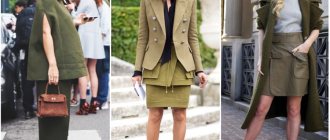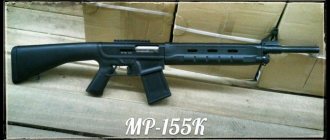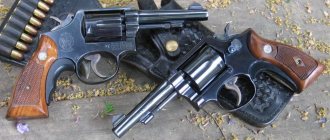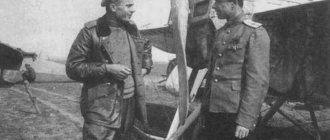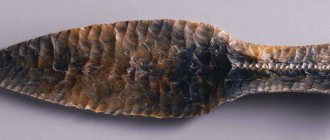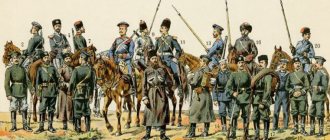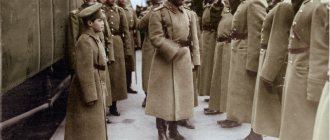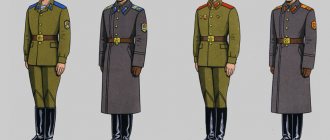Style lessons: husariad September 14, 2009, 00:03 | Katya Golubeva
5 chosen
They scare us with everything: global warming, environmental disasters, and even the imminent end of the world! It’s no wonder that we so want world peace, a sense of security and celebration!
Three wishes at once is impossible, you say?
However, fashion designers who were sensitive to such sentiments were able to embody all these aspirations in the image of a dashing hussar. The first surge of the Husariad was noted in 2002, after the September 11 tragedy in New York. Givenchy, Chloe, Marc Jacobs and many other famous brands demonstrated hussar motifs in their collections: rows of buttons, elegant cords, fasteners. Bright, life-affirming, strikingly different from ordinary military, this style quickly found its fans. And now there is a new misfortune - the global financial crisis, and fashion designers again brought the “squadron of flying hussars” to the catwalk. Moreover, women's collections are more theatrical than men's. For comparison: the elegant men's collection of Dior and the shocking, almost carnival women's collection of Balmain.
Let's see how the stars play hussar Kuralai Nurkadilova , the head of the Kuralai Fashion House Ksenia Sobchak looks shocking. But somehow tasteless. The jacket seems to have been taken off someone else's shoulder. It would seem that so bulky, it should emphasize the fragility of Ksenia’s silhouette, but the opposite effect is created. Beyoncé , on the contrary, has a well-developed image. Elements of the hussar style suit her very well. However, Beyoncé already has quite wide shoulders, so if I were her, I would choose a smaller cut jacket.
Rihanna's jacket should have been shortened by a few centimeters, revealing the slender wasp waist of the glam rock diva: in combination with mini-shorts, this would have had an excellent effect. Svetlana Metkina’s image was put together very competently: it’s quite casual, and at the same time it’s completely shameless to go on a visit, and it’s quite appropriate to wear trousers to work. Stylish and tasteful - a solid A+.
Estella Warren has a very poor choice of jacket. The cut of the product and decorative elements undoubtedly attract the eye, but they also visually weigh down the actress’s top, which looks strange in combination with the dark bottom, which makes the girl look slimmer. Emma Roberts looks incomparably better. Notice how Emma chose the tone of her lipstick to match the color of the jacket’s decor - a good solution that allows you to concentrate the attention of others on the bright details.
If I were Kim Kardashian , the owner of beautiful round hips, I would swap the color scheme of the top and bottom, wearing a darker bottom and a lighter top to create balance between the body parts. Bebe Neuwirth looks simply impeccable in a snow-white suit. There is not a single extra detail!
The hussar style involves a huge amount of detail in decoration. And as you can see, clothing in this style can decorate you, but it can also do a disservice. Therefore, when creating a wardrobe, it is very important to maintain balance. Recorded by Katya Golubeva , etoya.ru Photo: zimbio.com, spletnik.ru, style.com, people.com
Related materials:
Style | expert opinion | hussar fashion | Givenchy | Chloe | Marc Jacobs | Dior | Balmain | Ksenia Sobchak | Beyonce | Rihanna | Svetlana Metkina | Estella Warren | Emma Roberts | Kim Kardashian | Bebe Neuwirth
Articles
- Trend of the season: “metallic” October 17, 2009, 00:02
- Must-have of autumn 2012: Hats September 24, 2012, 00:00
- The world through rose-colored glasses March 23, 2016, 00:00
Video
- Pop art style makeup from Dior August 23, 2010, 00:00
- Makeup in the style of menthol candies from MAKE UP FOR EVER July 29, 2016, 11:00
- Nude style makeup with new products from Guerlain October 24, 2022, 09:00
Hussar uniform and military style elements in women's clothing
Considering current fashion collections, it should be noted that the military style on the catwalk occupies one of the important positions. Only this time, in addition to the uniforms of different branches of the military, the designers give special preference to the hussar uniform. Apparently, the time has come for us to remember the hussar uniform. What was he like?
Militta has already talked about one of the original items of clothing that was part of the hussar uniform - the Hungarian, or as it was also called, the dolman. The uniform of the hussars in Russia, starting from the 18th century, has undergone changes many times. But everyone always liked it.
Young people, having determined their path in the military field, never remained indifferent to what uniform they would have to wear. And the beauty of the uniform attracted no less than the military service itself. And about the women, needless to say - at the sight of the hussar regiments passing through the streets of the cities, their hearts fluttered, and exclamations of delight and admiration burst from their chests. By the way, when Russian troops entered Paris in 1814, the same happened with the French women.
Dolce & Gabbana
The hussar uniform included a dolman (short jacket with a stand-up collar), a mentik - also a jacket worn over the dolman and trimmed with fur at the edges, narrow leggings (chikchirs), low boots, cords, braids, fringe, and tassels. About 15 transverse rows of double cords with rows of convex buttons were sewn on the chest of the dolman and mentik.
If we add to everything that the uniform of the hussars was unusually bright, containing at least three or four colors, then the spectacle during the movement of the hussar troops was amazing.
And yet, we will not now study in detail all the items of the hussar uniform, everything has its time. Let us only note that many designers expressed their admiration for this form in the fall-winter 2016-2017 collections. Militta, of course, shares with them the admiration for the beauty of the hussar uniform.
Dolce & Gabbana
However, it should certainly be noted that the uniform of the hussars comes from Hungarian clothing, from where many of its elements came into the military uniforms of all European countries. Therefore, music from “Hungarian Rhapsody” had to be played on the catwalk during the show, or the models had to march to dashing hussar songs. But, as we know, this did not happen, because the beauty of music and the singing of performers is not pampered at shows, so we had to listen to what was there, or simply turn a deaf ear.
But the models with elements of Hungarian costumes were extremely pleasing. Some collections only decided to decorate with cord and buttons, but it still turned out extremely beautiful. And now you have the opportunity to look and choose, and maybe create your own new options with elements of the hussar uniform.
Photo above - DSquared2 Photo below - Elisabetta Franchi
Alessandra Rich Ermanno Scervino, Temperley London, Vivetta
From the hussar's shoulder: learning to wear a jacket-uniform and remaining feminine
The history of this jacket goes back deeply to the 15th century, when an elite “unit” was formed in Hungary - the hussar regiment. Closer to the 19th century, hussar uniforms began to spread throughout Europe. This is understandable - this uniform was considered status, it was decorated with beautiful shiny golden buttons with multi-colored cords and a stand-up collar. Then, as fashion befits, women began to try this amazing thing on themselves, since such a jacket very favorably emphasized the dignity of the figure.
Then, closer to our era, this item of clothing began to be popularized by stars, for example, Michael Jackson, Jimi Hendrix..
Now such a jacket is becoming popular again; famous designers periodically use it in fashion shows. However, some girls still feel embarrassed when putting on a uniform jacket, fearing to look too bright and pretentious, because such a jacket is indeed very bright and independent. Therefore, in order to reduce the degree of solemnity and eliminate the possibility of looking like a circus performer, it is recommended to mix it with simple things, unless, of course, you are a fashion blogger or a show business star, who do not obey the boundaries of the reasonable and combine incongruous things.
So, let's look at some options for a competent jacket-uniform combination.
With simple jeans
For example, skinny. Although many designers recommend forgetting about this cut of jeans for at least a season, if you are not ready for serious changes in your image, you can get by with these.
A great addition to this jacket would be flared jeans. They have plenty of advantages - they visually elongate the silhouette, lengthen the legs, and make them slimmer, and they can be matched to almost any body type.
Well-worn boyfriend jeans can also be a good accent. This way, you can play on the eclecticism of two different styles, which is encouraged in street-style, and you can even get into the chronicles of street photographers. In general, you will not go unnoticed.
With a pencil skirt
It produces a bow that is very familiar to those around you. In this image, you will achieve two goals - you will look original, and at the same time not too bright in the eyes of others.
With shorts
They can be either cotton or denim. To support the military theme, you can choose khaki shorts. In this case, the image will be completely complete.
With leather trousers
I agree, for some this option will seem too bold, but I think that among the readers there are such, and they will not be ashamed to go out in this form. Moreover, this look will completely repeat Gigi Hadid’s appearance at the Tommy Hilfiger show at New Your Fashion Week. There Gigi appeared in a luxurious uniform, mixed with leather trousers and a white top.
Several compatibility rules
There are several rules that it is advisable to follow if you do not want to look “too much”. Firstly, be careful when choosing accessories when wearing such a jacket. There is a risk of overloading the image and then all the work will go down the drain, and others will notice not you, but only your jacket. You can, for example, simply tie a scarf around your neck.
Secondly, according to my personal observations, such a jacket looks great on a slender figure. However, owners of curvy figures should not despair, because now there are many stores where you can find the same jacket in an elongated form.
And thirdly, cast aside all doubts and just start fantasizing.
Photo: impromp-two.blogspot.ru, fashion-expects.blogspot.ru, candybreathcandybreath.blogspot.ru, hello-style.ru, moya-moda.ru, fashiony.ru
Hussar regiments of the Russian army in the war with Napoleon
Hussars - light cavalry of the Russian army - were intended to perform reconnaissance tasks, combat protection of troops, communications, covering flanks in battle, and raids on enemy communications.
By the beginning of 1812, the Russian army had hussar regiments: 1 regiment - in the guard, 11 regiments - in the army: Life Guards Hussar Regiment, Alexandria Hussar Regiment, Akhtyrsky Hussar Regiment, Belarusian Hussar Regiment, Grodno Hussar Regiment, Elizavetgradsky Hussar Regiment, Izyumsky Hussar Regiment, Lubensky Hussar Regiment, Mariupol Hussar Regiment, Olviopol Hussar Regiment, Pavlograd Hussar Regiment, Sumy Hussar Regiment.
In the fall of 1812, Count P.I. Saltykov formed a hussar regiment as one of the militia units at his own expense and from his serfs. In December 1812, the regiment was merged with the Irkutsk Dragoon Regiment, which was renamed the Irkutsk Hussar Regiment. The uniform of the new hussar regiment retained the one in which Saltykov dressed his regiment.
By December 1812, two hussar regiments were formed from among the German colonists of the Saratov province, as well as German defectors from the German units of Napoleon’s army, which became part of the volunteer Russian-German Legion. However, these two regiments were not part of the Russian army, but were included in the militia.
Hussar regiment staff: - regiment commander (colonel) - 1, - major - 1, - battalion commanders (lieutenant colonels) - 2, - squadron commanders (captains) - 10, - lieutenants - 12 (including treasurer and quartermaster), - cornets - 10, - combatant lower ranks (soldiers and non-commissioned officers) - 1500, - non-combatant (batmen, auditor, priest, clergy, staff doctor, battalion doctors, paramedics, patient supervisor, squadron barbers, infirmary attendants, Wagenmasters, clerks , gunsmith and his students, farrier, blacksmith, carpenters, furleyts, provos) – 113.
The regiment had two battalions, and the battalion had five squadrons. The squadron has 150 hussars (lower ranks), a squadron commander (captain), 2 subaltern officers (lieutenant and cornet). In total, the regiment had 1,500 lower combat ranks, 4 staff officers, 32 chief officers. The Life Guards Hussar Regiment had not ten, but five squadrons and was not divided into battalions.
Life Guards Hussar Regiment.
Formed in 1796. Four squadrons of the regiment took part in the war. They were part of the 1st Cavalry Corps of Lieutenant General F.P. Uvarov. The commanders of the regiment in 1812 were Colonel N. Ya. Mandryka, then Colonel Prince D. S. Abomelik. The most famous battles of the regiment were the raid of the cavalry of Uvarov and Platov during the Battle of Borodino, partisan actions in the autumn-winter of 1812, participation in the foreign campaign of 1813-1815. In 1813, the regiment was awarded the St. George Standard.
Horse regiments of the Russian Guard, 1812
Alexandria Hussars Regiment.
He did not take direct part in the battles of 1812. He blocked the roads to Kyiv and destroyed French foragers. Participated in the foreign campaign of 1813-1815. He distinguished himself in a foreign campaign in the Battle of Katzbach, for which he was awarded the badge on his shako “For Distinction on August 14, 1813.”
Akhtyrsky Hussar Regiment.
Formed in 1756. The basis was the Slobodsk Cossack Regiment. From the first days, eight squadrons of the regiment took part in the war as part of the 7th Infantry Corps under Lieutenant General N. N. Raevsky. The regiment commander was Colonel D.V. Vasilchikov. In the Battle of Borodino, the regiment fought at the Bagration flushes and near the Semenovsky ravine as part of the 4th Cavalry Corps. The first partisan detachment was separated from the regiment under the command of Lieutenant Colonel D.V. Davydov. The detachment operated near Vyazma. He took part in the foreign campaign of 1813-1815. In 1813 he was awarded silver trumpets. He distinguished himself in the battle of Katzbach, for which he was awarded the badge on his shako “For Distinction on August 14, 1813.”
Belarusian Hussar Regiment.
He was part of the Danube Army, which covered the southern direction. He took part in the foreign campaign of 1813-1815. He distinguished himself in the battle of Katzbach, for which he was awarded the badge on his shako “For Distinction on August 14, 1813.”
Grodno Hussar Regiment.
He did not take direct part in the battles and did not participate in foreign campaigns. In 1812 he covered the St. Petersburg direction.
Russian hussar regiments, 1812
Elizavetgrad Hussar Regiment.
Formed November 29, 1796. The basis was the Elisavetgrad pike regiment. From the first days, eight squadrons of the regiment took part in the war as part of the 2nd Infantry Corps, Lieutenant General K. F. Baggovut of the 1st Western Army of General Barclay de Tolly. The regiment commander is Major General A. M. Vsevolzhsky. The regiment distinguished itself in the defense of Smolensk. He fought in the Battle of Borodino near the village of Bezzubovo as part of the 1st Cavalry Corps under Lieutenant General F.P. Uvarov. He took part in the foreign campaign of 1813-1815. For distinction in 1813 he was awarded the Trumpets of St. George and the badge on his shako “For Distinction.”
Izyum Hussar Regiment.
Formed in 1756. The basis was the Slobodsk Cossack Regiment. He took part in the war (8 squadrons) from the first days as part of the 4th Infantry Corps of Lieutenant General A. I. Osterman-Tolstoy (later General P. A. Shuvalov) of the 1st Western Army of General Barclay de Tolly. He distinguished himself in the battle of Lubino and in the battle at the Kolotsky Monastery. In the Battle of Borodino, as part of the 2nd Cavalry Corps, Major General F.A. Corfu defended Raevsky’s battery. He took part in the foreign campaign of 1813-1815. In September 1814 he was awarded the St. George Standards, and in November - the shako badges “For Distinction”.
Irkutsk Hussar Regiment.
Formed in the fall of 1812 as a militia by Count P. I. Saltykov from his serfs at his own expense. He did not take part in the battles of 1812. In December 1812, he was merged into the Irkutsk Dragoon Regiment, which suffered heavy losses in the battles. The regiment was renamed the Irkutsk Hussar Regiment and transferred to the army. In this composition he took part in the foreign campaign of 1813-1815.
Lubny Hussar Regiment.
He did not take direct part in the battles. Covered the Kiev direction. He did not take part in the foreign campaign.
Mariupol Hussar Regiment.
In November 1796, the Mariupol Light Horse Regiment was reorganized into a hussar regiment. Eight squadrons took part in the war as part of the 3rd Cavalry Corps of Major General Count P. P. Palen (later Major General F. C. Corfu) of the 1st Western Army of General Barclay de Tolly. He distinguished himself on August 7, 1812 in a battle near the village of Lubino. In the Battle of Borodino, the regiment participated as part of the brigade of Major General I. S. Dorokhov: saving the situation, it went on the attack against the heavy French cavalry and suffered heavy losses.
During the foreign campaign of 1813-1815, he distinguished himself in the battle of Katzbach. In April 1813 he was awarded the Trumpets of St. George, and in the fall of 1813 he was awarded the badge on his shako “For Distinction on August 14, 1813.”
Olviopol Hussar Regiment.
He was part of the Danube Army, which covered the southern direction. He did not take part in the foreign campaign of 1813-1815.
Pavlograd Hussar Regiment.
He did not take direct part in the battles and did not participate in foreign campaigns. In 1812 he covered the Kiev direction.
Sumy Hussar Regiment.
In 1796, the Sumy Light Horse Regiment was reorganized into a hussar regiment. In the War of 1812, from the first days, 8 squadrons of the regiment took part in the 6th Infantry Corps of Infantry General D.S. Dokhturov of the 1st Western Army, General Barclay de Tolly. The regiment commander was Colonel D. A. Delyanov. He took part in the battles of Ostrovno and Lubino. At Borodino, as part of the brigade of Major General I. S. Dorokhov, he fought at the Bagration flashes and at the Raevsky battery. He took part in the foreign campaign of 1813-1815. He distinguished himself in the battle of Liebertvolkwitz and in the so-called Battle of the Nations near Leipzig. Awarded in April 1813 with the Trumpets of St. George, on May 30, 1814 - with signs on the shako “For Distinction”.
Russian hussars during combat operations, 1812
1st and 2nd Hussar Regiments of the Russian-German Legion.
In December 1812, they were formed as a militia from German colonists of the Saratov province and German defectors from the German units of Napoleon's army. They took part in the foreign campaign of 1813-1815. Operated in northern Germany. The future theorist of military art, German General von Clausewitz, also served in one of the regiments. The regiments were disbanded in April 1815.
In 1882, the hussar army regiments were renamed dragoon regiments, and by the beginning of the 20th century there were only two guards hussar regiments in Russia: His Majesty's Life Guards and the Grodno Life Guards. In 1907, after defeat in the Russo-Japanese War, Nicholas II decides to “revive” the Russian army and its spirit. The hussar regiments again receive their former names and their former uniforms of the 1870s. Thus, as of January 1, 1914, the two guards hussar regiments were supplemented by the revived Sumy Hussar Regiment, which was part of the Grenadier Corps, and 17 army hussar regiments, which received continuous numbers from 2 to 18.
Gabriel Tsobekhia
Source
